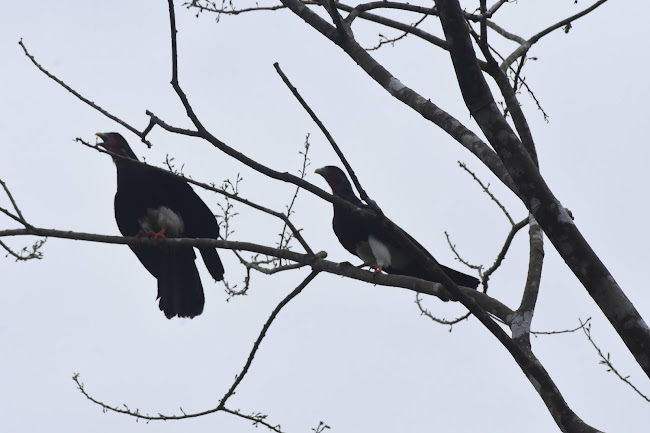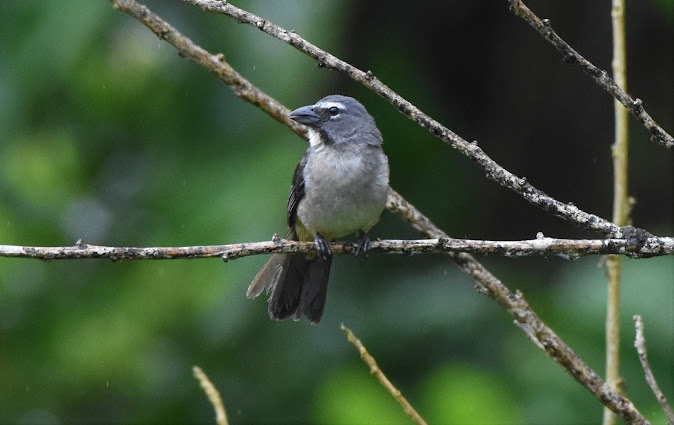The Journey to 10,000 Birds
A life. A mission. And the ever aging body and mind. The hour glass has been turned upside down. This year I celebrated my next "100" life birds. Sometimes, it's easy. Sometimes, it's viewing a bird in bad weather conditions. And sometimes, it's a fleeting glance and never more. Either way, the mission must move forward.....
Eared Quetzal, 1100, Chiricahua Mountains near Portal, AZ
Last year was a difficult year with the pandemic going on. However, I did manage to add some great birds like this epic award winning Eared Quetzal. This bird is super rare for Arizona and it's the crowning achievement for any birder. Every now and again, this species will come up into southeastern Arizona and breed. This species is difficult in its' Mexican range. So to have it in Arizona was very special. During one moment, the bird flew to a branch a few feet away from me. Now this picture hangs on our wall. It was my most sought after bird in Arizona and also for my life list.
Red-crowned Woodpecker, 1110, Panama City, Panama
At 1110, I celebrated my lifer Red-crowned Woodpecker in Panama City. While maybe not as exciting as the Eared Quetzal, this common woodpecker to Panama was found in a variety of habitats. And that WAS interesting. I was also reminded about "speciation" as this woodpecker is similar in call and appearance to the many other woodpeckers of its category like the Hoffman's, Red-bellied, Golden-fronted, or Gila Woodpeckers. And that was something I found fascinating with this species!
White-eared Conebill, the Darien, Panama
I'll admit that I don't know enough about conebills. I've seen 2 species now from this group of birds. They remind me of a cross between warblers, nuthatches and Verdins. The bill is very warbler. It clings to the undersides of leaves like a nuthatch or warbler and yet moves like a Verdin. It flies around in pairs like gnatcatchers do. And is found in flocks of small birds. I saw it in a very beautiful wooded area. The female above looks like a Lucy's Warbler in this pic. It was 1120.
Yellow-crowned Tyrannulet, 1130, the Darien, Panama
I can't explain why tyrannulets make me so happy, but they do. In Panama, there were so many of them. And there were only a few that I was really able to get views of....like this Yellow-crowned Tyrannulet. This was a lifer I was hoping I'd get to see and thankfully I did. With its high call, "Dee-DEER!" up in the canopy, it made for lifer 1130. That short bill and little round yellow belly is quite cute.
Plain-colored Tanager, 1140, Gamboa, Panama
I am sure fascinated by all the tanagers in the tropics. But I'll admit that I don't like the name of this bird. Plain-colored? Couldn't they have come up with a different name? Sure, maybe they are not as brilliant as these flashier tanagers but this tanager is not as plain as one might be lead to believe. What you can't see in this pic is that little flash of electric blue on the wing. I'd call it the Electric-jolt Tanager.
Checker-throated Stipplethroat, 1150, the Darien, Panama
Limpkin, 1160, Darien, Panama
This pic was taken form Wiki and is not my own work. I hope to have that remedied one day.I won't forget this one. Our guide called out Limpkin and I was the only one who said, "Where?!" Everyone stopped and looked at me. One person questioned, "Really? You don't have Limpkin yet?!" NO. This bird is commonly seen in Florida and most people have it on their lists. I've been to Florida, but it has too many birds! I worked on the harder ones while I was there. And the Limpkin search is planned for my second trek down. But now I can officially add it to my life list. We had beautiful scope views from the side of the road on a stormy evening in the Darien.
Red-throated Caracara, 1170, the Darien, Panama
We had great observations of these birds. I even took a video of them calling. Their populations are in decline due to habitat loss. They definitely like the wild forests and could often be heard calling in the far distance. I'd like to see these birds again and I will have more chances down the road. I love the caracara group.
Black-crowned Tityra, 1180, the Darien, Panama
I have seen the Masked Tityra many times. I've only attempted to find the Black-crowned once. This family of birds is quite beautiful.
Mottled Owl, 1190, the Darien, Panama
Pic taken from WikiOn our second to last night out in the Darien, we went out for a night drive. I was physically exhausted after several full days of birding. On every trip, I try to add a few owls to my life list. Owls can be easy or difficult. On this night, we had great success finding 3 different species of owls. I saw them well with my binos but was just too tired to bring my camera. I fell asleep on the ride back in the open fresh air.
Blue-throated Goldentail, 1200, Yaviza, Panama
I finally reached 1200 with this Blue-throated Goldentail. We were on a buggy trail in the dense forest in overcast and rainy weather. We arrived by a sinking canoe on one of the major river systems that ran through indigenous tribal land. I saw this bird through a scope and was able to ID it and call it . But I knew that taking a pic was going to be out of the question. So I took one anyway and I was right....it was bad. This is a Central American bird that I hope I will get to see again.
Common Gull in Wales back in 2018
Lifer ticks also happened and shuffled my life list around. I added 2 new species with the split of the Mew Gull. Both were seen before the Panama trip. The Short-billed Gull was seen in Oregon and the Common Gull was seen in Wales. I took photo documentation of both species because this was an expected split.
Finally, on a split that I was NOT aware of, the Grayish Saltators turned into 3 new and separate species. All again, seen before my Panama trip. The pic above is of the Olivaceous Saltator seen in Trinidad. We are constantly learning new things about birds. As my life list expands, the more I have to stay on top of things. Keeping track of subspecies and noting the differences (or not) is important and can be worth the time and effort. I'm well on my way to 1300 now and my work continues. Over the next 10 years, I hope to be in the area of 3 or 4 thousand new birds, but we'll see. There are so many places to discover and just not enough time to do it all. But it will be fun:)

















Wow. New blog. New birds. I hope you get to see them all, my friend. Perhaps we will get to see a few more together before I get too old! Keep having fun!
ReplyDelete